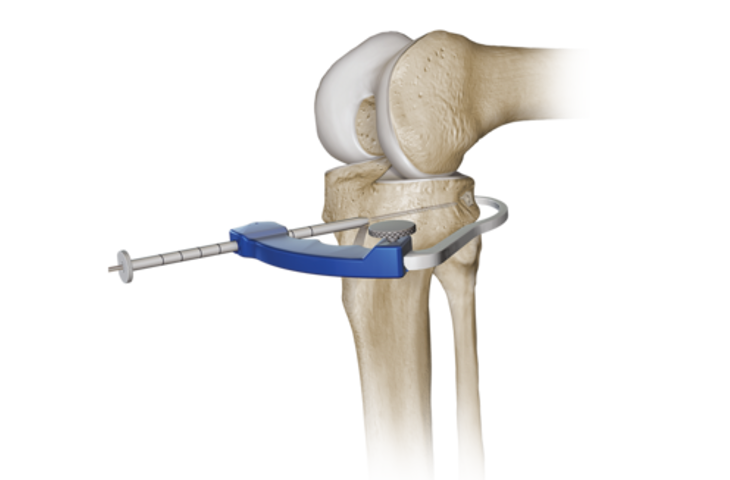Lateral Collateral Ligament Reconstruction
A surgical procedure performed to replace a torn or incompetent lateral collateral ligament (LCL). An incision is made to expose the native LCL attachment sites on the femur and fibula bones. Sockets are drilled at the attachment sites to accommodate graft tissue. The graft is introduced into the sockets and secured in place with absorbable anchors. The knee is then examined to ensure appropriate motion and stability with the intact graft.

Common Questions About Lateral Collateral Ligament Reconstruction
What is the lateral collateral ligament?
The lateral collateral ligament is the ligament on the outside of the knee that connects the fibula and femur. It is responsible for stabilizing the knee from an outward directed force.
How is a lateral collateral ligament reconstruction performed?
A lateral collateral ligament reconstruction is performed by making an incision above the LCL and drilling sockets into the femur and fibula. The graft is placed into the sockets and secured to the attachment site with absorbable suture anchors.










